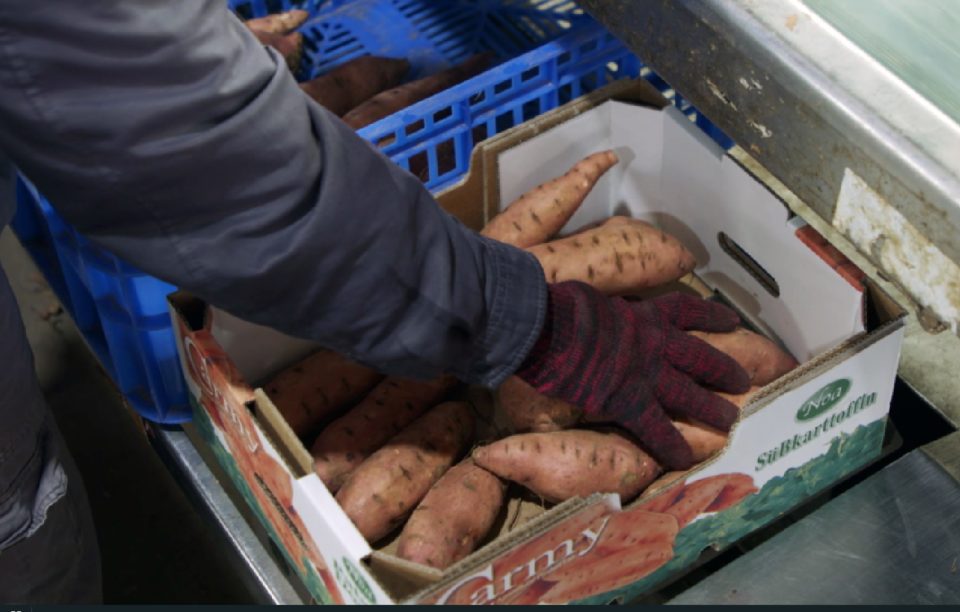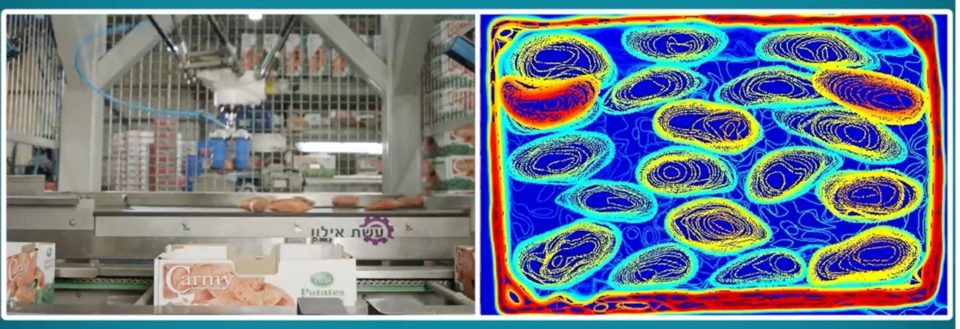
3D Vision and Soft Grippers Drive Significant Productivity Gains for Sweet Potato Exporter
July 8, 2022
In the face of rising inflation and an increasingly volatile labor situation, advanced automation paves a path forward for companies of all types.
Loaded with vitamins and minerals, the sweet potato is a healthy, nutritious, and versatile food—whether simply roasted or prepared in a fancy holiday casserole. This popular food is also a profitable crop. But like most other businesses, sweet potato exporters are not impervious to labor shortages and inflation.
To ensure that sweet potatoes remain on menus and in kitchens worldwide, companies can deploy advanced technologies, such as robots and machine vision, to automate processes and thereby increase productivity, cut costs, and drive revenue. Challenges exist, but the right combination of hardware and software can help the lights stay on, and then some.
Labor Struggles, Inflation Woes
Across the globe, employers of all types continue to face labor shortages. In the United States, the Labor Department’s Job  Openings and Labor Turnover Survey (JOLTS) shows that the number of available jobs dropped from 11.9 million in March to 11.4 million in April, but openings remain elevated at approximately double the number of unemployed Americans. This equates to 1.9 jobs for every unemployed person.
Openings and Labor Turnover Survey (JOLTS) shows that the number of available jobs dropped from 11.9 million in March to 11.4 million in April, but openings remain elevated at approximately double the number of unemployed Americans. This equates to 1.9 jobs for every unemployed person.
Making it even more difficult for employers is the fact that U.S. inflation dropped only 0.1% in April from March’s 40-year high of 8.5%. In the food industry, prices rose at the fastest pace since April 1981, at a rate of 9.4% according to the US Bureau of Labor Statistics. In response, companies increasingly rely on advanced automation to keep products flowing out the door. In fact, orders for industrial robots in the United States rose 40% year-over-year in the first quarter of 2022 as companies looked to protect themselves against labor shortages and to cut costs.
A3 figures show that approximately 9,000 robots worth nearly $544 million were sold during Q1, compared to more than 6,400 robots worth around $346 million sold during the same period in 2021. These figures include a 21% increase in robot orders in the food and consumer goods industry. The major trend, according to A3 vice president of membership and business intelligence Alex Shikany, is that companies can’t find people: many A3 member companies are trying to hire right now but can’t fill positions due to a lack of qualified candidates. So companies of all types and sizes are deploying industrial automation systems at a record pace.
Finding a Soft Touch
At a major sweet potato export er in Israel, a machine sorted sweet potatoes by size. Potatoes of different sizes would travel from different sections of a main conveyor belt. At conveyor output stations, employees would then pack the potatoes neatly into boxes. Each station required at least four employees to pack sweet potatoes. The company wanted to automate this process, so it hired automation company Assatec Robotics.
er in Israel, a machine sorted sweet potatoes by size. Potatoes of different sizes would travel from different sections of a main conveyor belt. At conveyor output stations, employees would then pack the potatoes neatly into boxes. Each station required at least four employees to pack sweet potatoes. The company wanted to automate this process, so it hired automation company Assatec Robotics.
Even manually, picking sweet potatoes in a high-speed process is challenging because of the variety of shapes and sizes. So the Assatec team needed to find robotic grippers capable of handling the potatoes. When other grippers on the market proved inadequate, Assatec turned to the Soft Robotics’ mGrip™ solution. The IP69K-rated gripper uses an advanced material science–based approach to pick up products of all types safely and efficiently.
The mGrip’s patented elastomeric plastic grippers are made with food-safe materials. Hollow gripper fingers with flexible holds are pneumatically controllable at low pressure, allowing grippers to gently grasp objects such as sweet potatoes without the need to adjust the variables of the overall automation system. “With the previous system, the gripper could hold parts that varied in shape, but we found limitations,” said Or Levy, CEO of Assatec. “With the Soft Robotics gripper, however, we could even handle teacakes without breaking them.” He added, “Without this gripper, the application would not have been possible.”
3D-Vision-Guided Robotic Picking and Placing
In the new process, sweet potatoes travel down the conveyor belt in a random array and pass under an NSIX CVK5 3D camera positioned above the input conveyor. Based on Intel RealSense technology, the camera – which offers 1280 x 720 depth resolution at up to 30 fps at maximum resolution – captures 3D images of the potato NSIX Vision Keys software running on an Intel Core i7-9700 industrial PC with an NVIDIA GeForce GTX 1650 graphics processing unit guides a FANUC M-3iA/6S delta robot equipped with soft grippers to make picks.
For potato placement optimization, a custom volume fitting algorithm within has been developed within Vision Keys software. Two additional CVK5 3D cameras are positioned above the boxing area. They capture 3D images of each box being packed. The software analyzes the images and decides where to put the next potato in the box. Once the robot places a potato into a box, the system immediately begins the process of picking another potato and finding a place for it in the box.
Once a box is fully packed, the system captures another 3D image to ensure that no potatoes are sticking up above the top edge of the box. If any potatoes are above the top edge, a vibratory mechanism under the box helps spread the products out to even them, another job that was previously done by employees. Just one robot now completes the work of up to four people.
New Doors Opened
In an increasingly automated world, produce companies also need flexibility, which is why Assatec designed the system with versatility in mind. “While this particular system works with sweet potatoes, [it could handle] oranges, pineapples, or any other type or fruit or vegetable,” said Levy. “With our algorithms, the Soft Robotics gripper, and 3D vision, our system can handle nearly any type of produce, which opens up new possibilities in automation.”
